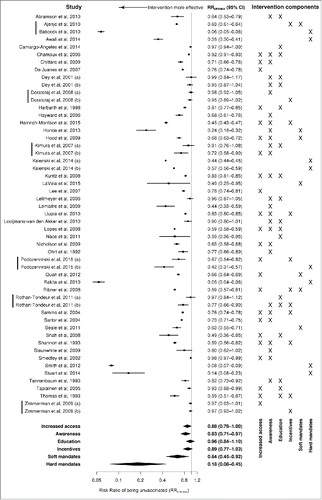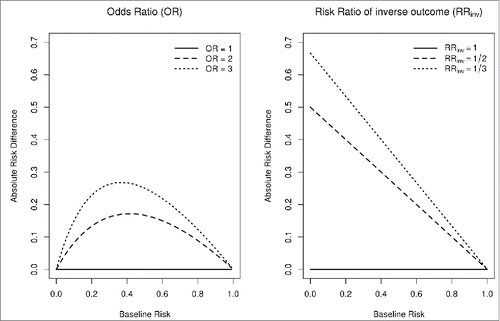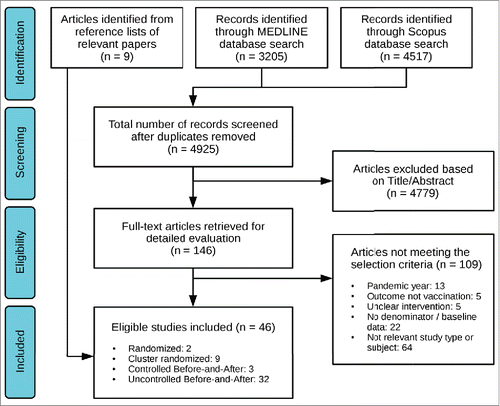Figures & data
Table 1. Characteristics of included studies.
Figure 2. Forest plot: results from individual studies and random-effects meta-regression model (logarithmic scale). Vertical bars before study names indicate comparisons that are clustered together.

Figure 3. Funnel plot of meta-regression residuals (observed–fitted log Relative Risk) against their standard errors.

Table 2. Intervention components to increase influenza vaccine coverage in HCWs.
Figure 4. Relationship between absolute risk difference and baseline risks for different effect measures. Using OR as an intervention effect measure implies that, for a given intervention effectiveness, the absolute benefit (i.e., absolute risk difference) is maximal when baseline risks are near 50%. Using RRinv implies that the absolute benefit gets smaller as baseline risks increase. The latter is a much more reasonable assumption in the case of vaccination coverage, since if more HCWs are already vaccinated at baseline, fewer additional HCWs will get vaccinated for a given intervention effectiveness.


